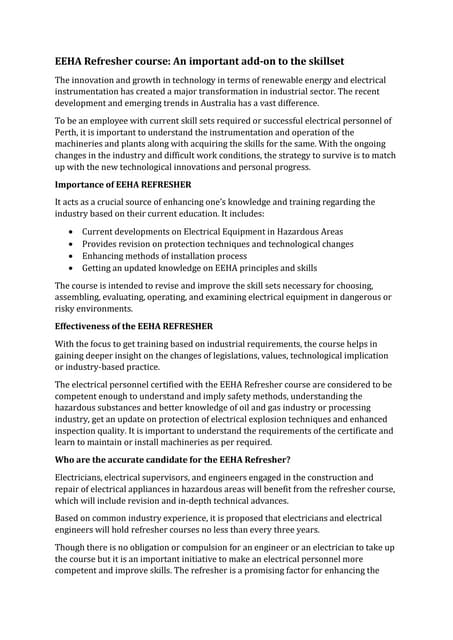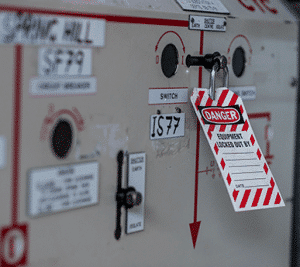Roar Solutions Fundamentals Explained
Wiki Article
Excitement About Roar Solutions
Table of ContentsThe Roar Solutions DiariesEverything about Roar Solutions10 Easy Facts About Roar Solutions Explained
In such an ambience a fire or surge is feasible when 3 basic conditions are fulfilled. This is often referred to as the "unsafe area" or "combustion" triangular. In order to secure installments from a potential surge an approach of evaluating and categorizing a possibly hazardous location is called for. The purpose of this is to make certain the appropriate selection and setup of equipment to ultimately protect against an explosion and to ensure safety of life.
(https://telegra.ph/Roar-Training-Solutions-and-EEHA-Courses-Your-Gateway-to-Emergency-Care-Expertise-12-02)
No devices must be set up where the surface area temperature level of the tools is above the ignition temperature of the provided hazard. Below are some typical dirt dangerous and their minimal ignition temperature. Coal Dust 380C 225C Polythene 420C (melts) Methyl Cellulose 420C 320C Starch 460C 435C Flour 490C 340C Sugar 490C 460C Grain Dust 510C 300C Phenolic Resin 530C > 450C Aluminium 590C > 450C PVC 700C > 450C Soot 810C 570C The possibility of the danger being existing in a concentration high sufficient to trigger an ignition will differ from area to location.
In order to identify this danger an installation is separated into areas of danger relying on the quantity of time the unsafe exists. These areas are described as Areas. For gases and vapours and dusts and fibers there are three zones. Zone 0 Zone 20 A hazardous environment is extremely most likely to be present and might exist for lengthy periods of time (> 1000 hours each year) or also continuously Zone 1 Zone 21 A harmful environment is possible however unlikely to be present for long periods of time (> 10 450 C [842 F] A classification of T6 means the minimal ignition temperature is > 85 C [185 F] Harmful area electrical equipment perhaps created for use in greater ambient temperature levels. This would certainly showed on the rating plate e.g. EExe II C T3 Ta + 60C( This implies at 60C ambient T3 will certainly not be exceeded) T1 T1, T2, T3, T4, T5, T6 T2 T2, T3, T4, T5, T6 T3 T3, T4, T5, T6 T4 T4, T5, T6 T5 T5, T6 T6 T6 A T Course rating of T1 suggests the maximum surface temperature produced by the tool at 40 C is 450 C. Thinking the associated T Class and Temperature level score for the tools are ideal for the area, you can constantly utilize a tool with a much more rigorous Division score than required for the location. There isn't a clear response to this concern sadly. It actually does depend upon the kind of equipment and what fixings need to be accomplished. Equipment with particular examination procedures that can not be carried out in the area in order to achieve/maintain third party rating. Should return to the manufacturing facility if it is prior to the devices's solution. Field Repair By Authorised Personnel: Complicated testing may not be needed however specific procedures might need to be complied with in order for the tools to keep its 3rd party rating. Authorised workers should be used to execute the work correctly Fixing should be a like for like substitute. New part need to be considered as a direct substitute calling for no special screening of the tools after the fixing is complete. Each piece of tools with a harmful ranking ought to be reviewed individually. These are laid out at a high level listed below, however, for more thorough information, please refer directly to the standards.
Not known Incorrect Statements About Roar Solutions
The devices register is a detailed database of tools records that consists of a minimum collection of areas to recognize each thing's place, technical parameters, Ex-spouse classification, age, and environmental information. This information is critical for tracking and taking care of the devices properly within unsafe areas. In contrast, for routine or RBI tasting examinations, the grade will be a combination of Thorough and Close examinations. The proportion of Detailed to Shut examinations will be identified by the Equipment Risk, which is examined based on ignition risk (the possibility of a source of ignition versus the probability of a flammable atmosphere )and the harmful location classification( Zone 0, 1, or 2). This variant will certainly also affect the resourcing needs for work preparation. As soon as Lots are defined, you can develop sampling plans based upon the sample size of each Lot, which describes the number of random devices things to be inspected. To figure out the needed sample dimension, 2 facets need to be reviewed: the size of the Lot and the group of assessment, which suggests the level of effort that need to be applied( lowered, typical, or increased )to the examination of the Whole lot. By incorporating the classification of evaluation with the Whole lot dimension, you can then develop the proper rejection requirements for a sample, indicating the permitted number of damaged products located within that example. For more details on this process, please refer to the Power Institute Guidelines. The IEC 60079 conventional recommends that the maximum period between assessments must not surpass three years. EEHA evaluations will likewise be carried out outside of RBI campaigns as part of arranged maintenance and equipment overhauls or fixings. These assessments can be attributed toward the RBI example dimensions within the affected Whole lots. EEHA assessments are carried out to identify faults in electrical devices. A weighted scoring system is necessary, as a single item of tools might have several faults, each with differing levels of ignition risk. If the mixed rating of both examinations is much less than twice the mistake score, the Whole lot is regarded appropriate. If the Great deal is still taken into consideration undesirable, it has to undergo click here for info a complete examination or reason, which may set off stricter examination procedures. Accepted Lot: The causes of any type of mistakes are recognized. If a typical failing mode is located, added devices may require examination and repair. Faults are classified by seriousness( Safety and security, Integrity, Housekeeping ), guaranteeing that immediate concerns are assessed and resolved quickly to alleviate any kind of effect on safety and security or procedures. The EEHA database should track and record the lifecycle of mistakes in addition to the restorative activities taken. Executing a robust Risk-Based Evaluation( RBI )approach is crucial for making certain conformity and security in handling Electrical Equipment in Hazardous Areas( EEHA) (high voltage courses). Automated Mistake Rating and Lifecycle Monitoring: Effortlessly manage mistakes and track their lifecycle to improve evaluation precision. The introduction of this assistance for risk-based inspection additionally enhances Inspectivity's position as a best-in-class service for regulative compliance, in addition to for any kind of asset-centric evaluation usage instance. If you want learning more, we invite you to request a presentation and find just how our option can transform your EEHA administration processes.
The Basic Principles Of Roar Solutions

In terms of eruptive danger, a dangerous area is a setting in which an eruptive environment exists (or may be expected to be present) in amounts that require unique safety measures for the building and construction, installment and use of equipment. high voltage courses. In this article we check out the obstacles encountered in the work environment, the risk control procedures, and the required expertises to function securely
These compounds can, in particular conditions, create eruptive atmospheres and these can have major and terrible consequences. Many of us are familiar with the fire triangular eliminate any kind of one of the 3 components and the fire can not happen, but what does this mean in the context of harmful areas?
In the majority of instances, we can do little about the degrees of oxygen airborne, yet we can have significant influence on sources of ignition, for instance electric devices. Hazardous locations are documented on the harmful area classification illustration and are recognized on-site by the triangular "EX-SPOUSE" indicator. Here, among other essential info, areas are divided into three kinds relying on the danger, the possibility and period that an explosive ambience will certainly exist; Zone 0 or 20 is regarded the most hazardous and Zone 2 or 22 is deemed the least.
Report this wiki page